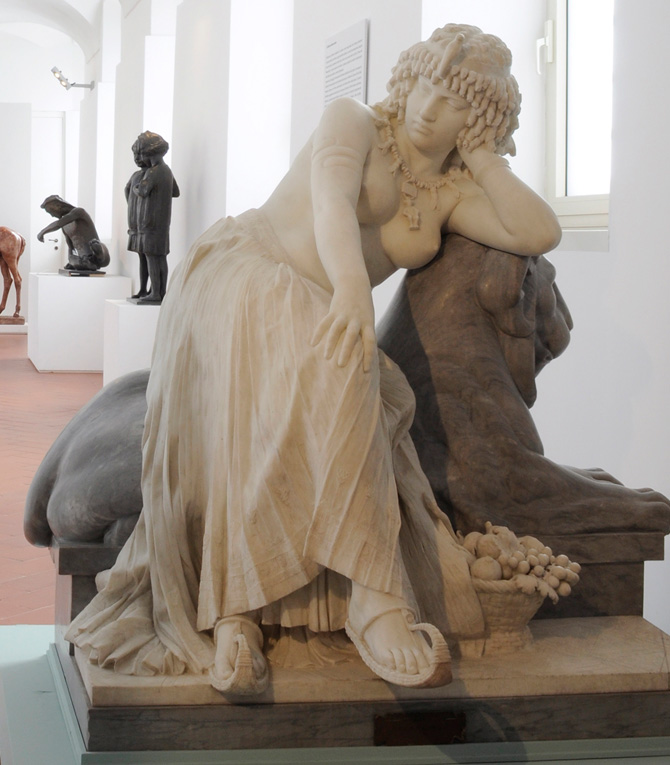Scythian gold diadem of Tabiti 4th C. BCE
Personal opinion: I assume that since all the men, except the attendant, are kneeling in front of the seated woman that she might be the Queen of the Scythians. The image correlates with other female divinity images in Scythian art that I've often seen described as Tabiti or 'possibly Tabiti'. I've also developed a theory that the mirror in her hand is a further sign that she is Tabiti (Scythian Hestia). When I was reading Plutarch's 'Life of Numa', he states that the Greeks would only rely on mirrors to create Hestia's fire as this was seen as a pure and unpolluted cosmic fire. It is possible that the Scythians believed in a similar concept and held the mirror as more than just a personal utensil, but also as a symbol of Tabiti's fire.
...
"FIG. 120 Gold sheet diadem with relief decoration from Sakhnovka Kurgan 2, Cherkasy region, Ukraine. 350-300 BC. Length 36.5, height 9.8 cm, 64.58 gr. Kiev, Museum of Historical Treasures.
FIG. 121 Outline drawing of the gold diadem with relief decoration from Sakhnovka. The relief scene shows ten figures, all kneeling except that of the woman seated in a chair in the centre, with her face turned towards the viewer. She holds a mirror and a round-bottomed drinking-vessel, while a male figure is approaching her from her right with a drinking-horn in his raised right hand. All male figures wear conventional Scythian dress, two of them with a gorytos. At the left edge a bearded man is about to stab a dagger into the back of a bare-chested figure with his hands tied behind his back. The next two figures to the right drink from one drinking-horn, as in the appliqué shown in Figure 98b. To the right of the seated woman kneels a figure with a drinking-horn in his left hand and a rod in his right. Behind him a bard is playing a lyre and a beardless Scythian is pouring wine from a ribbed amphora into the drinking-cups held by the beardless figure in front of him. Source: Greco-Scythian Art and the Birth of Eurasia: From Classical Antiquity to Russian Modernity by Caspar Meyer."
-taken from warfare6te
 |
| Scythian gold diadem of Tabiti 4th C. BCE. |
 |
| Outline drawing of the gold diadem. |
Source/Quote:


Comments
Post a Comment